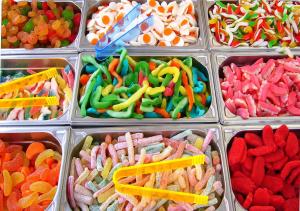Ask a Mentor
Food for Thought
By Gabe Kraljevic
Posted on 2020-03-27
 I recently came across an activity where a spinal cord was represented using candy. I can only imagine how excited the students must feel while completing this project, but I am wondering if it truly led to a better understanding of the material for the students?
I recently came across an activity where a spinal cord was represented using candy. I can only imagine how excited the students must feel while completing this project, but I am wondering if it truly led to a better understanding of the material for the students?
—F., North Dakota
You asked the most important question when evaluating lessons ideas: Will this activity lead to a better understanding for your students?
If you just wanted students to understand the layout of the spine and spinal cord then perhaps arranging candy in a pattern that mimics this anatomy might work. But if you needed them to have a better understanding of how the form and function of the spine work together then I believe that colored clays or other durable and inedible material would be more appropriate. The students would have more flexibility to make the models more life-like and allow you to display or handle them for longer periods of time without worrying about decay or hungry critters (or your students).
Another way to approach this model-building is to have students brainstorm conceptual models. How could you represent the spinal cord by its purpose? If students understand the idea that nerves send signals to transfer information and control an organism’s body, they may decide to represent a spinal cord using bundles of wires.
While I was known for handing out treats, I didn’t use candy or other foods for hands-on activities primarily because students will eat some, raising many concerns: Are their hands, the containers, and all work surfaces hygienic? What would students do with morsels that fell on the floor? Should alternatives be provided to students who can’t eat these treats due to allergies, health issues, and so forth, so they don’t miss out?
Save the candy for treats. Use something else for models.
Hope this helps!
Image by Shirley Hirst from Pixabay
Disclaimer: The views expressed in this blog post are those of the author(s) and do not necessarily reflect the official position of the National Science Teaching Association (NSTA).


